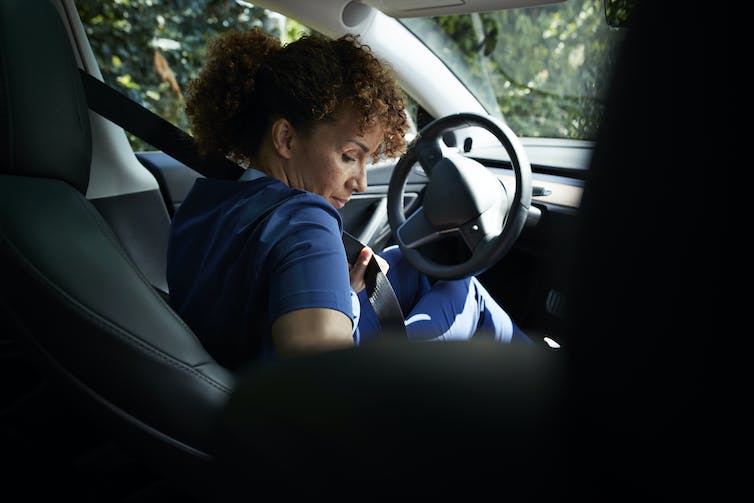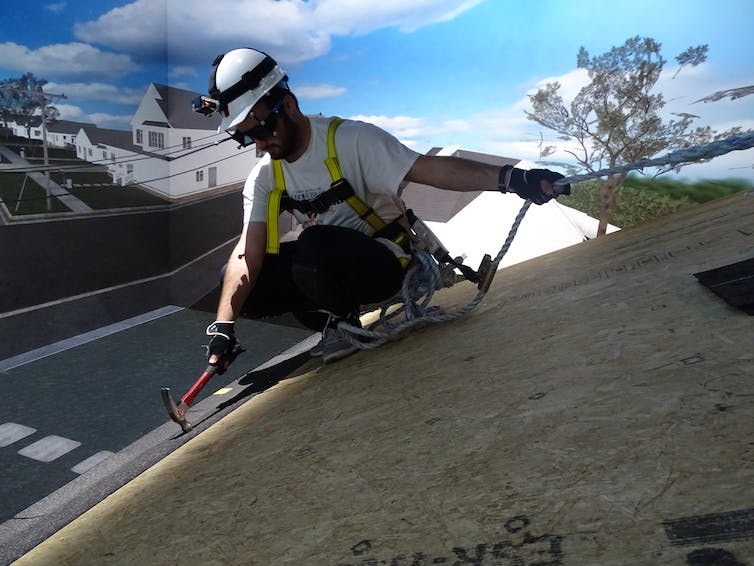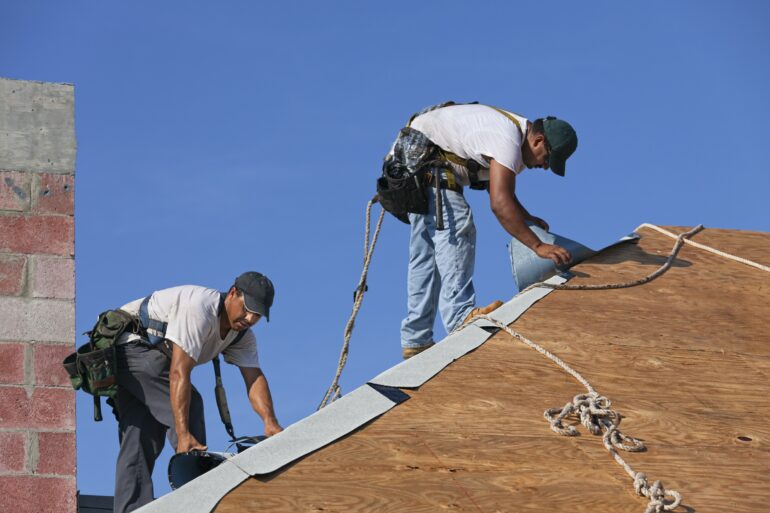Interventions designed to keep people safe can have hidden side effects. With an increased perception of safety, some people are more likely to take risks.
For example, some vehicle drivers take more risks when they are buckled up in a shoulder-and-lap belt. Some construction workers step closer to the edge of the roof because they are hooked to a fall-protection rope. Some parents of young children take less care with medicine bottles that are “childproof” and thus difficult to open.
Techniques designed to reduce harm can promote a false sense of security and increase risky behavior and unintentional injuries.
As civil engineers and applied behavioral scientists, we are interested in ways to improve workplace safety. Our ongoing research suggests that employers need to do more than provide injury-protection devices and mandate safety rules and procedures to follow. Job-site mottos like “safety is our priority” are not enough. Employers need to consider the crucial human dynamic that can counteract their desired injury-prevention effects – and tap into strategies that might get around this safety paradox.

Infamously, people may drive more recklessly after buckling up.
Klaus Vedfelt/DigitalVision via Getty Images
Why precautions can trigger more risks
A well-established psychological phenomenon known as risk compensation or risk homeostasis explains this safety paradox. An intervention designed to prevent or reduce unintentional injury decreases one’s perception of risk. Then that perception increases the person’s risk-taking behavior, especially when taking a risk has a benefit, such as comfort, convenience or getting a job done faster.
Just as thermostats have a set point and activate when the temperature deviates from normal, people maintain a target level of risk by adjusting their behavior. They balance potential risks and perceived benefits.
For instance, a driver may compensate for safety interventions like a vehicle shoulder-and-lap belt, an energy-absorbing steering column and an airbag by driving faster – trading off personal safety for time saved. The heightened odds of a crash at higher driving speeds don’t affect only the driver; they also put other vehicles, pedestrians and cyclists at more risk. An individual’s risk compensation can influence the injury-prevention impact of protective devices and safety-related rules and regulations for the population overall.
In our own research, we investigated the risk compensation phenomenon among construction workers using an immersive mixed-virtual reality scenario that simulated a roofing task. We asked participants to install asphalt shingles on a real 27-degree sloped roof within a virtual environment that conveyed the sense of being 20 feet off the ground. Then we monitored the workers’ actions and physiological responses while they completed roofing tasks under three levels of safety protection.

…



